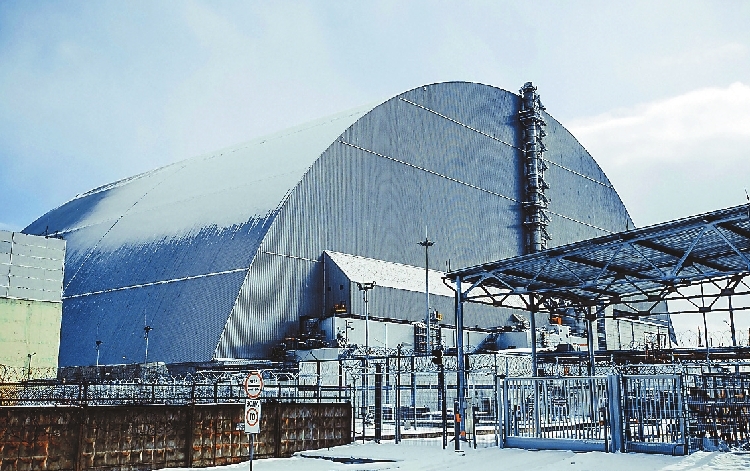
Ukraine last week unveiled a giant structure built to confine radioactive* debris at the nuclear reactor that exploded in Chernobyl in 1986. The structure for the Chernobyl nuclear power plant’s Reactor No. 4 cost US$1.7 billion to build. The complex to secure the molten reactor’s core and 200 tons of highly radioactive material took nine years to complete under the auspices* of the European Bank for Reconstruction and Development. Officials have described the shelter as the largest moveable land-based structure ever built, with a span of 257 meters and a total weight of over 40,000 tons. The confinement design is an arch-shaped steel structure with an internal height of 92.5 meters. The arches are constructed of tubular* steel members and are externally clad with three-layer sandwich panels. These external panels are also used on the end walls of the structure. Internally, polycarbonate* panels cover each arch to prevent the accumulation of radioactive particles on the frame members. Large parts of the arches were shop-fabricated* and transported to the assembly site 180 meters west of Reactor 4. Each of the steel tubes is made of high-strength steel to reduce cost and assembly weight. Warm, dry air will be circulated in the gap between inner and outer roof sections to prevent condensation, which will reduce corrosion and prevent water from dripping into the interior. The New Safe Confinement was slid into place. Sliding of the structure along foundation rails was a difficult process. It was pushed on Teflon pads by hydraulic pistons*, and guided by lasers. Reactor No. 4 at the plant in what was then Soviet Ukraine exploded and burned on April 26, 1986, spewing radioactive dust across Europe.(SD-Agencies) | 
